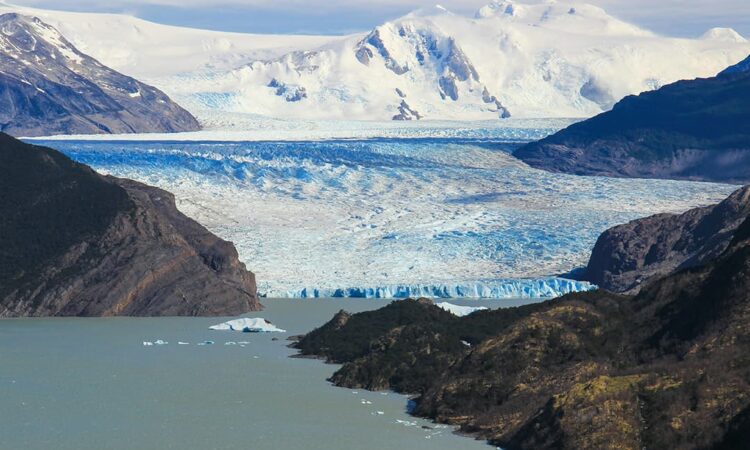The lowest temperature on Earth is -98°C, a new temperature record was recorded in 2018 in the north of Antarctica. The weather in Antarctica is harsh, the continent is only open to travelers during the Antarctic summer season.
The Antarctic continent is considered a desert, despite its vast supply of fresh water. Precipitation here is rare and falls in solid form (ice or snow).
Even in the Antarctic summer, 99% of Antarctica is covered with ice, reaching a thickness of 5000 meters. The earth does not retain heat here, as the sun’s rays are almost entirely reflected by the ice.
Three climatic zones are represented in Antarctica:
Inner part of the continent, the polar plateau: the coldest area of Antarctica with the most extreme conditions.
Winter temperatures here range from -40 to -70 ºC (the minimum recorded temperature was -89º.3 ºC, at Vostok Base). And precipitation is minimal, with only 100 mm of annual rainfall.
The climate on the coast is influenced by the ocean. Temperatures range from -15 to -32ºC in winter and -5 to 5ºC in summer.
Rainfall varies between 200-600 mm per year.
Also these coastal areas are subject to the strongest winds, averaging 54 km/hour, exceeding 300 km/hour during winter storms.
Antarctic Peninsula: this is a region with a warmer and wetter climate.
The peninsula is the most temperate and humid region with frequent precipitation of about 1000 mm per year. Temperatures range from 0 to 5ºC in summer and -10 to -30ºC in winter.
Due to milder climatic conditions and plenty of vacant land, this is where human activities are concentrated. In addition, most of the wildlife gathers in this part for breeding.
At the South Pole, 2,800 meters above sea level, the average annual temperature is -49°C, ranging from -28°C in January to -59.5°C in July. The lowest recorded temperature is -83°C and the highest: -12°C.
Antarctica’s coastal areas
The coastal regions of Antarctica have a much milder climate. This is due to the lower latitude (in some areas the coasts are above the Arctic Circle) and lower altitude (unlike inland areas, where there is a thick ice cap), as well as the influence of the sea. Temperatures here rarely drop below -30°C, even in winter. The highest temperature was recorded here on January 5, 1974, and it was 14.5°C.
Average temperature by months – Australian station “Casey”
Esperanza station on the Antarctic Peninsula
At Argentina’s Esperanza station, located in the warmest part of the Antarctic Peninsula, temperatures are even higher, in fact, the daily average ranges from a minimum of -10.5°C in June to a maximum of 1.5°C in January.
Winds
Strong winds are characteristic of Antarctica. They are caused by an anticyclone (or high pressure center) that usually develops inside the continent, from where the winds are generated in a northerly and northeasterly direction to the cyclone zone (or low pressure centers) located in circumpolar latitudes.
Precipitation
The air over Antarctica is usually so cold that it cannot hold water vapor. Therefore, precipitation is scarce here. It is usually snow.
The amount of snowfall in the Antarctic interior is only 200 mm per year. Near the coast, the amount of precipitation increases significantly – about 600 mm. per year. On the sea islands their amount is possibly up to 1000 mm. per year.
Climatic conditions depend mainly on the altitude you are at.
When it is better to go to Antarctica
The Antarctic season lasts about five months (November to March), each with its own peak times. At the end of the season, there are usually fewer people on cruises, but also less fauna on the mainland.
During the summer in Antarctica (December through February), temperatures on the Antarctic Peninsula range from -2°C to 5°C. In the Ross Sea it can be much colder, with temperatures dropping to -20 ° C.
A most adventurous time. On one of the first ships you will sail through waters still covered in ice, watching the snow covered shores. Penguins at this time return to their colonies after a long journey and begin building their nests. You may see a lot of ice and snow early in the season, which adds a special charm to the landscape, but ice can certainly also be a hindrance to your itinerary.
December and January are the warmest months and the weather is the best for visiting Antarctica. This is when the first penguin cubs hatch. You will be treated to almost 24 hours of daylight. Many cruise ships offer holiday trips, capturing Antarctica’s Christmas and New Year’s Eve celebrations.
February and March provide optimal conditions for whale watching. In mid-March, the season in Antarctica ends and winter sets in.
